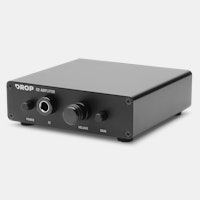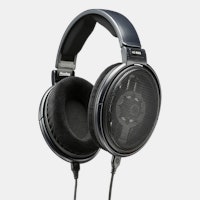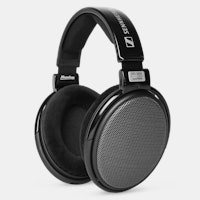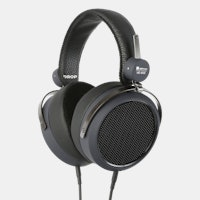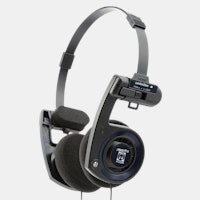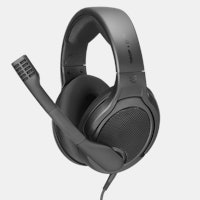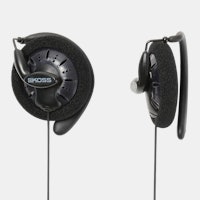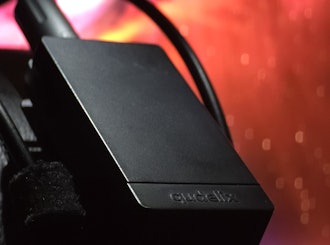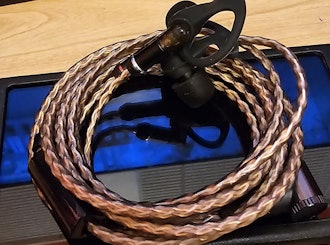Click to view our Accessibility Statement or contact us with accessibility-related questions









This may just be a dumb question, and that’s alright as I’m genuinely curious. In the case of the low gain setting on the “medium gain” amp, wouldn’t an output of 1.0x be equal to the input? Anything times one is equal to itself, right? Now, that could be the case as in no increased levels of volume, but the signal will be stronger and more stable resulting in less noise. So, how exactly does it work when dealing with a factor of 1.0x? On that note, I would be using the desktop amp almost exclusively for IEMs, and all of my current headphones (as well as IEMs) are under 300Ω, but I do plan on getting some high impedance headphones down the road. It’ll probably be a while away before I do go in that direction. Should I opt for the “medium gain” amp now? Keeping in mind my question above, I do like loudness (but when it’s also clean). Will the high gain setting give me a good sense of loudness for most IEMs ($200-ish average)?

Cancel
search
close
Sort by: Newest
keyboard_arrow_down
jgillingham
177
Aug 21, 2021
Not a dumb question, and you're right: if gain = 1.0x, then output = input. To be more specific, input voltage = output voltage. In audio, gain usually means voltage gain, and it certainly does in this case. The output current will be equal to the output voltage divided by the impedance of the headphone or IEM.
What's the point of an amp that doesn't amplify (also known as a buffer)? If you don't need the gain, the amp will have lower noise and distortion. It will also have the other main advantage of any power amp, regardless of gain: much greater output current than the DAC or preamp, and much greater output power since power = current x voltage.
How much gain do you need? Probably 1.0x in your case. Read the following blog post, especially the section called "Gain Details":
http://nwavguy.blogspot.com/2011/09/all-about-gain.html

SuperFlyEDSguy
58
Aug 22, 2021
jgillinghamHey @jgillingham 👋
Thanks for hitting me back up on this. Since the posting, I did incidentally find and read some of NwAvGuy’s blog — and, man, that’s some good stuff! — He missed out on the opportunity to compile it all and publish it as “Audiophilia for Dummies!” 😂 I, like everyone else am curious as to why he stopped posting, but considering that http://nwavguy.com/ (note the .com suffix) still points to his blog, I’m convinced he still wants the world to see it. 🌎 Otherwise, why pay to keep the .com registered and maintain the domain forwarder?! 🤷♂️ I didn’t expect an answer, but when I checked the Whois on his domain it comes up as “REDACTED FOR PRIVACY.” What a shock, right?! 😆


PRODUCTS YOU MAY LIKE
Trending Posts in Audiophile

Simthaniel
Rigs
Modded headphones with qudelix at the core
When I received the Qudelix 5K, I had already modified a pair of Superlux HD-681 headphones. I previously soldered my own balanced connections to the drivers, providing multiple ways to connect and...
Apr 14, 2024

brothamike
A decent set of IEMs
I am in the midst of a 300 hour burn-in but, I will say I am enjoying how this set sounds so far. Before I received these which was btw late by a few weeks, I purchased a Sony/Kimber Kable MMCX...
Apr 12, 2024
merrick97
Should I exchange the PC38X for better headphones?
I bought the PC38X headphones FOR GAMING and they are great, but I have NO use for a Microphone since I don't do competitive gaming and I was wondering if there were better headphone options at a similar price without a headphone, where (presumably) more of the cost was put into making it sound better. I also find that my PC38X don't get quite as loud as I would like and I was wondering if a cheap amp like the iFi Go link would draw a little more volume out of my phones. https://www.amazon.com/dp/B0BN6MM822?psc=1&ref=ppx_yo2ov_dt_b_product_details I went with the PC38X since it was considered the best bang for buck headphones. I care most about using spatial apps like DOlby Atmos and DTS Headphone:X. Suggestions are welcome.
Apr 11, 2024

LostnAmerica
Sound Signature of the Grell Project.
Wondering what type of sound signature the Drop Grell project headphones will have or trying to attain. Any update would be appreciated.
Apr 8, 2024

Fabulous
Looking for a gaming/content audio setup
Hello! I'm looking for recommendations on audio setups. I'd be planning on using it mostly for gaming. Preferably I'd like a pair of large closed back headphones since I have a big head and jaw. I'd also like to hear myself through my mic with mic monitoring. As far as budget goes, I don't really have one. But under 600$ would be nice. I can go higher if needed. The audio setup would be connected to a high performance PC. Thank you in advance for any recommendations!
Apr 4, 2024

1plsd
$10 Drop Coupon Email not sent?
Trying to buy some gear off Drop for the first time. I was told I would receive an email with a welcome to drop $10 off promo. I never received that email. Drop was able to send me emails for my login token and email for Password update. But for some reason the $10 off coupon was never sent to me.
Mar 31, 2024

NMPacella
New here
Hello, I just joined, primarily for the audiophile products. Looking at purchasing the NHT C3 speakers for our new living room. Space is about 15 feet wide by 33 long and they will fire long ways. Space is just for general listening, music room with all equipment is downstairs, so hoping they will fill it with sound nicely. Cheers.
Mar 18, 2024
